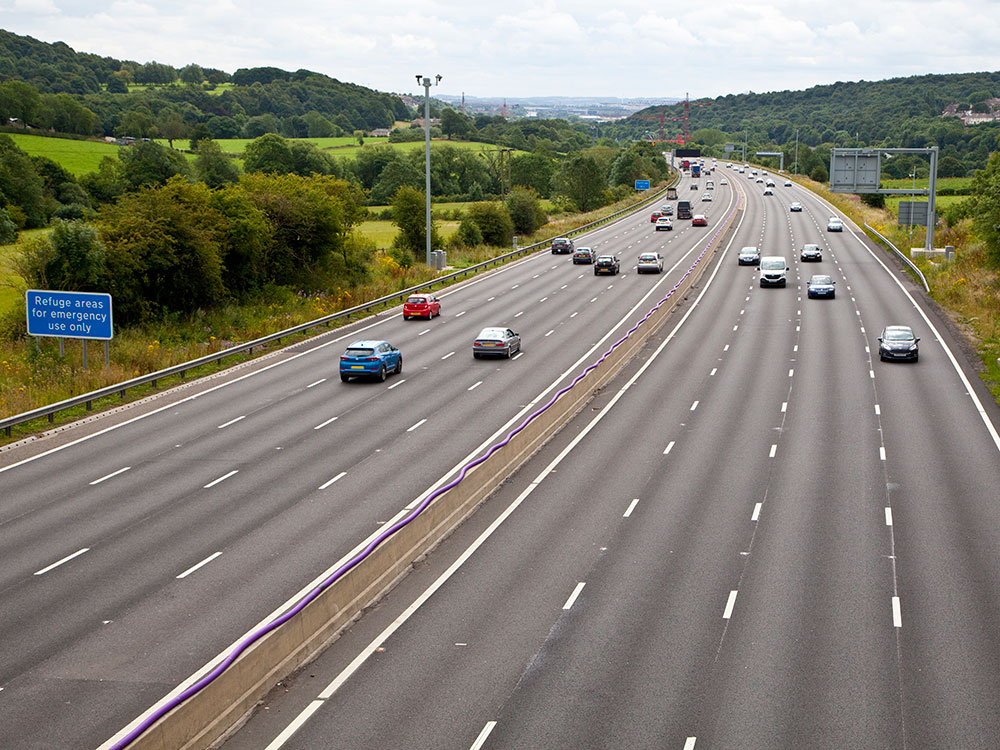A traffic officer who attended a fatal collision on a smart motorway has told a coroner how he comes across motorists stranded in live lanes on a daily basis, including one woman who told him she had been in her car undetected for an hour-and-a-half.
Julian Havell, who has 17 years’ experience patrolling motorways for National Highways in the Yorkshire region, was giving evidence on the second day of the inquest into the death of grandmother Nargis Begum, who died on the M1 near Woodall Services, in South Yorkshire, on September 9 2018.
Mr Havell’s patrol went to help after the car Mrs Begum was travelling in was hit by another vehicle after it stopped in a live lane of the motorway.
Mr Havell said he comes across people stranded on live lanes on just about every patrol, with seven being the most he can remember in one day.
He told Doncaster Coroner’s Court: “I found one lady sitting in the live lane of the M1 who had been there in excess of one and a half hours.”
Mr Havell recalled the incident happened “in the last couple of years” and the woman was stranded between Woodhall services and Junction 30 of the M1, with a flat tyre, waiting for one of the recovery services.
He also told the inquest he believed that technology to detect stationary vehicles had been planned for two stretches of the M1 in Yorkshire when they were converted to smart motorways a number of years ago but it was not included when the sections were opened despite masts being constructed for the equipment.
Mr Havell told the inquest: “I can’t say whether it was budget constraints or an issue with the operation of the technology.”
He had been asked about why he said in his witness statement that there had been a “degradation of safety” by the removal of technology and emergency refuges.
Not enough refuges
He told the inquest: “As a traffic officer, I personally believe that the emergency refuges are not close enough together. There’s not enough of them.”
Prashant Popat QC, for National Highways, challenged Mr Havell on whether the stopped vehicle detection (SVD) system was available at the time the smart motorways in Yorkshire were being constructed.
[adrotate group=”3″]
He said a small-scale trial took place on the M25 in 2014 which led to a larger trial on the same motorway in 2016.
Mr Popat said: “Following that trial, National Highways committed to including SVD as standard for all new ALR (all lane running ‘smart’ motorway) schemes going forward from 2018.”
The barrister told the witness: “There is no piece of safety technology that’s relevant to anything we are discussing at this inquest that was removed from between junction 29 and 31 of the M1 at any stage prior to the construction of the ALR or removed after construction.”
Mr Popat said the gaps between refuges or other places of relative safety in the area, including junctions and service stations, were all within those specified in the relevant guidance.
The inquest has heard how Mrs Begum died after a Nissan Qashqai car, driven by her husband, broke down.
Previous hearings have heard the 62-year-old mother-of-five had got out of the car and was waiting for help when a Mercedes collided with the Nissan, causing it to plough into her.
[tptn_list limit=3 daily=1 hour_range=1]
